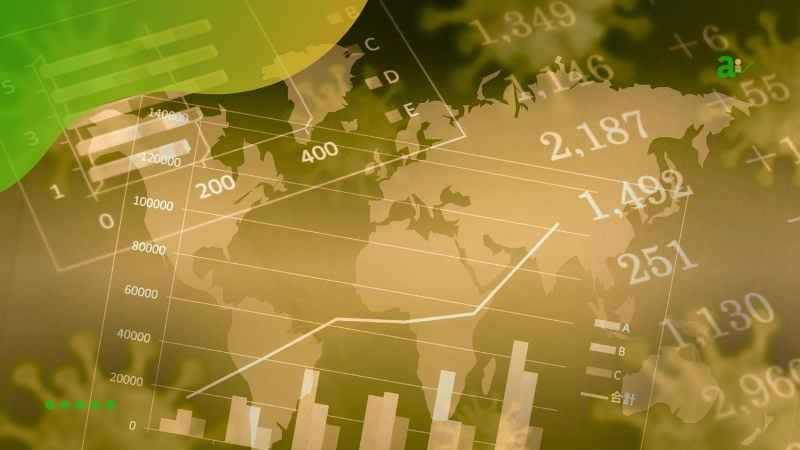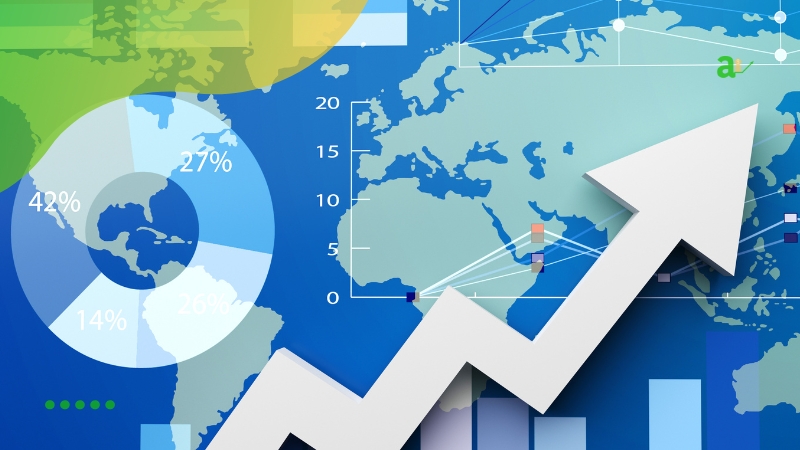Get to know the global economic outlook now, understanding exactly everything important that happened in the American, Chinese, European and Latin American economies. You will be able to understand exactly the impacts that each of the changes in the economy has on your reality.
You will stay on top of the growth projections of each region of the planet and the challenges that the world faces. In fact, one of the main ones is climate change and the indebtedness of the global population.
That way, if you are interested in staying on top of the entire global economic outlook, whether just to get informed or to invest your money in the best possible way. Keep reading.
Global Economic Growth

The global trend is for countries to show GDP growth of around 2.7% between 2025 and 2026. This growth will occur mainly in first-world countries, such as the United States, France, Spain, among others.
In countries considered to be 2nd and 3rd world, the trend is for growth not to reach 2.7%. Still, in general, the scenario is favorable, showing a growth trend that is almost reaching the pre-pandemic average, which was 3.2%. Showing that the world economy is returning to the standard growth average.
Inflation and Monetary Policy (Global economic outlook)
Global inflation continues to fall, with projections pointing to a rate of 3.5% by the end of 2025. This movement reflects the cooling of inflationary pressures that have marked the last few years. Driven by factors such as the normalization of supply chains and slowing demand growth in some economies.
Therefore, the main central banks, such as the Federal Reserve and the European Central Bank, have adopted a more flexible stance, promoting a gradual reduction in interest rates.
Thus, they seek to stimulate economic growth without compromising the control of inflation, ensuring a smooth transition to a less restrictive monetary environment.
Despite the deceleration trend, some sectors, especially services, still show resistance to the fall in prices. Thus, global monetary policy follows a path of difficult but gradual advancement.
Economic Performance by Region

United States
The United States of America has a strong growth trend. Studies have pointed out that growth in 2025 will be 2.3% of the US GDP.
Much of this positive result comes from the increase in American consumption. As well as the increase in economic productivity, due to the initial measures taken by then-President Donald Trump.
However, the measures taken by the current American president have been seen as rigid today. Reflecting the motto of the current government, which seeks to center its measures on what is best for the United States. Imposing harsh policies on countries governed by leftist parties, such as Brazil, for example.
China
China has always been synonymous with success when it comes to global economic outlook, due to the above-average growth of Chinese GDP. In the year 2025, the projection is that the Chinese economy will grow by 4.5%, but the trend is downward for 2026, where it is believed to reach a maximum of 4%.
The negative scenario is due to the strong impact that the Chinese economy has suffered from the impact of the slowdown in the real estate sector. To get an idea, today in China there are entire cities that are abandoned. Simply because people don’t want to live there. This, added to the indebtedness of the population, is leading the Chinese economy to a slowdown.
Europe (Global economic outlook)
Europe is expected to post modest growth of 1.0% in 2025, reflecting a slow recovery and major challenges limiting European growth. Although inflation is falling and central banks signal a loose monetary policy, the region still faces major challenges.
Among the main challenges are:
- Low productivity: in general, Europeans have been producing less and less, leading to a drop in revenue production;
- Population aging: today, a large part of the European population is made up of people between 45 and 60 years old. Therefore, with an older population, comes the drop in productivity, in addition to the collapse of the social security system.
In addition, the manufacturing sector, especially in Germany, considered the bloc’s leading economy. Continues to face difficulties, with falling external demand and challenges in transitioning to a more digital and sustainable economy.
Given this scenario, Europe’s recovery will depend on investments in innovation and competitiveness. In the short term, easing interest rates may alleviate some of the economic pressure.
Latin America
Latin America will grow by 2.5% in 2025, maintaining a steady pace of expansion. Despite the structural difficulties that always limit the growth of South American countries.
Among the main highlights are Mexico, which has benefited from the strengthening of trade relations with the United States and the growth of the industrial sector. In addition, Argentina seeks to regain economic stability through fiscal reforms and macroeconomic adjustments.
However, the scenario is not without risks. Political instability in several nations in the region and persistent fiscal challenges pose threats to sustainable growth.
Thus, Latin America and the Caribbean remains on a path of moderate growth. But depends on greater political stability and structural reforms to consolidate lasting economic growth.
Conclusion (Global economic outlook)
The world economy is recovering slowly but steadily. However, challenges remain great, especially in Europe and China, where there is a lot of debt and the population is aging.
Projections from each region of the world show that developed economies, such as the United States, maintain an expansion trajectory, driven by increased consumption and productivity.
On the other hand, Latin America is advancing more slowly, facing political and structural challenges that limit its growth potential.
Above all, China, once an engine of global growth, is now dealing with a slowdown due to the population’s indebtedness and the crisis in the real estate sector, which could impact international trade.
In short, the global economic outlook will continue to depend on strategic measures to ensure a sustainable recovery. Investment in innovation, infrastructure, and balanced fiscal policies will be essential to boost competitiveness and minimize the impacts of global challenges.
Thus, economies that are able to adapt to this new reality, promoting reforms and seeking greater stability, will be better able to sustain solid economic growth in the coming years.





